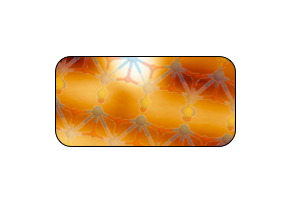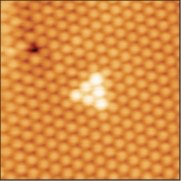The NIMS’s
Nanomechanics Group
The NIMS’s
Nanomechanics Group
People
Instrumentation
Research
Publications
Currently, we are focusing our research activities in studying these main topics:
Technologically relevant metal oxide templates:
We are investigating physical and chemical phenomena taking place at metal oxides templates of relevance in several applications related to green energy harvesting schemes.
One of these materials is Ceria (CeO2). Ceria is used in several applications related to catalysis and solid-oxide fuel cells. It is a good reducible oxide template for the massive production of hydrogen through the water-gas-shift reaction, in which CO and H2O react at the ceria surface to produce H2 and CO2. This reaction is dramatically enhanced by the presence of nobel metals at the ceria surface. We are applying advanced scanning probe tools to try to understand why and how this enhancement takes place.
Another reducible metal oxide template we are working with is titanium dioxide (TiO2) in the anatase polymorph. TiO2 is a material with important applications in energy-related developments, including photo-catalysis and solar-cell energy conversion schemes. Among the three common crystalline polymorphs of TiO2, crystalline anatase has shown considerably supremacy in mobility and low recombination rate of photo-induced charges that accounts for a high power conversion efficiency in solar cells. Whereas the phenomenology of rutile surfaces has been extensively studied at atomic scale over several decades, the amount of information regarding the properties of anatase at atomic scale is still scarce. We are working on unveiling them.
Organic/Inorganic interfaces:
We are investigating several types of organic molecule-solid interfaces with relevance in energy-related applications. In particular we are studying organic p-n junctions used in optoelectronic devices and solar-cell schemes.
Another organic interface we are interested in are photochromic molecules deposited in heterogenous surfaces: molecules that can undergo a reversible transformation between different isomers upon photo-irradiation. Such molecules may have important applications as photo-driven switches in optoelectronic implementations.




Research

Gallery and Media

Atomic resolution AFM image of a CeO2(111) substrate with a small concentration of defects
Copyright © Oscar Custance. All rights reserved.
Nanomechanics Group / Research Center for Advanced Measurement and Characterization
National Institute for Materials Science
Sengen Site / Interface Science Laboratories
Sengen 1-2-1, 305-0047 Tsukuba, Japan
